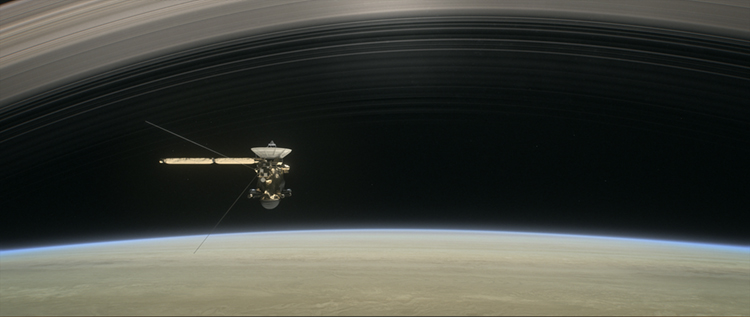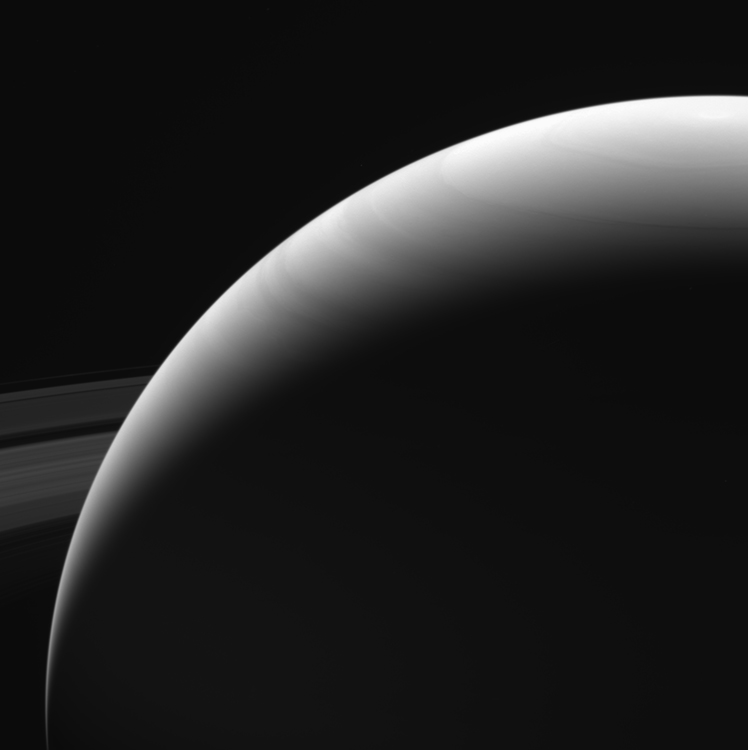Cassini is gone. For more than 13 years, the space probe revealed the secrets of Saturn. It ended its mission in a blaze of glory on Friday, September 15, crashing into the planet it had studied for so long.
Cassini regularly provided spectacular revelations about the Saturn system. It discovered lakes of liquid hydrocarbons on Saturn’s moon Titan, the first lakes observed outside of Earth. The probe also discovered vertical structures in Saturn’s rings, structures rising high above the equatorial plane.

Perhaps its most important discovery, however, was the detection of favorable conditions for life within the icy moon Enceladus. Measurements from Cassini revealed that a global ocean of liquid water lies beneath Enceladus’s icy crust. Furthermore, the probe imaged—and even flew through—plumes of ice crystals created by geysers at the moon’s surface. Cassini determined that these geysers were powered by hydrothermal activity in the ocean floor and that the plume contained hydrocarbon compounds. With these discoveries, Enceladus leapt to the top of the list of other places in the solar system where life might have developed.

Nearing 20 years in space, Cassini was running low on fuel. Mission planners directed Cassini to hurtle into Saturn’s clouds. Scientists were concerned that if the probe ran out of propellant and orbited uncontrollably within the Saturn system, it could have crashed into Titan or Enceladus. If this had occurred, any microbes from Earth surviving on Cassini’s surface could have contaminated these moons. Cassini sent back data and images right up to its final plunge into Saturn’s atmosphere.
Saturn will be without a visiting spacecraft from Earth for some time. With NASA trying to develop both the James Webb Space Telescope and the Space Launch System within its tight budget, planetary exploration has fallen by the wayside. Such probes take at least 5 to 10 years to plan and build. Then, it would take another six years or so for a spacecraft to reach Saturn. Therefore, any follow-up probe to Saturn would be at least a dozen years in the future.
Cassini may be gone, but its impact on the study of Saturn will continue to be felt for many years. Over 3,000 scientific papers have already been published based on data gathered by Cassini, and more are on the way. Current and future scientists will be using data gathered by Cassini to make new discoveries about the ringed planet for decades to come.
Untitled Document
Can't view the linked articles? Subscribe to World Book Online

World Book Online delivers a progressive sequence of core databases supported by supplemental
tools, such as language translation, graphic organizers, and unique Webquests. Moving from
Early World of Learning to World Book Advanced, World Book Online aligns end-users with their
appropriate learning levels. Each stand-alone site provides additional features to support the
needs of users’ specific capabilities.
The World Book Difference
World Book combines cutting-edge technology with traditional editorial excellence to produce
authoritative, trustworthy, and unbiased content. The digital content is updated in real time and
carefully curated for each learning level. Accessible 24/7, the content is available on a variety of devices.
World Book Online combines 21st-century instructional techniques with timely information.
By breaking down complex topics and using easily understandable text, World Book Online helps to
build fluency and increase comprehension. Featuring single sign-on capability, these sites are paired
with highly visual content to engage even the most reluctant reader. Our collection of resources kindles
a lifelong learning experience for every user. This adherence to clarity, currency, and accuracy makes
World Book’s digital offerings an information hub for the classroom, library, and beyond.
Image 1: Cassini photographed Saturn illuminated from behind by the sun. This panoramic view was created by combining 165 images taken by Cassini’s wide-angle camera over nearly three hours on Sept. 15, 2006. Credit: NASA/JPL/Space Science Institute
Image 2: This artist’s conception shows Cassini diving between Saturn and the planet’s innermost ring. Credit: NASA/JPL-Caltech
Image 3: This photograph of Saturn’s northern hemisphere was among the last taken by NASA’s Cassini spacecraft on Sept. 13, 2017. Credit: NASA/JPL-Caltech/Space Science Institut